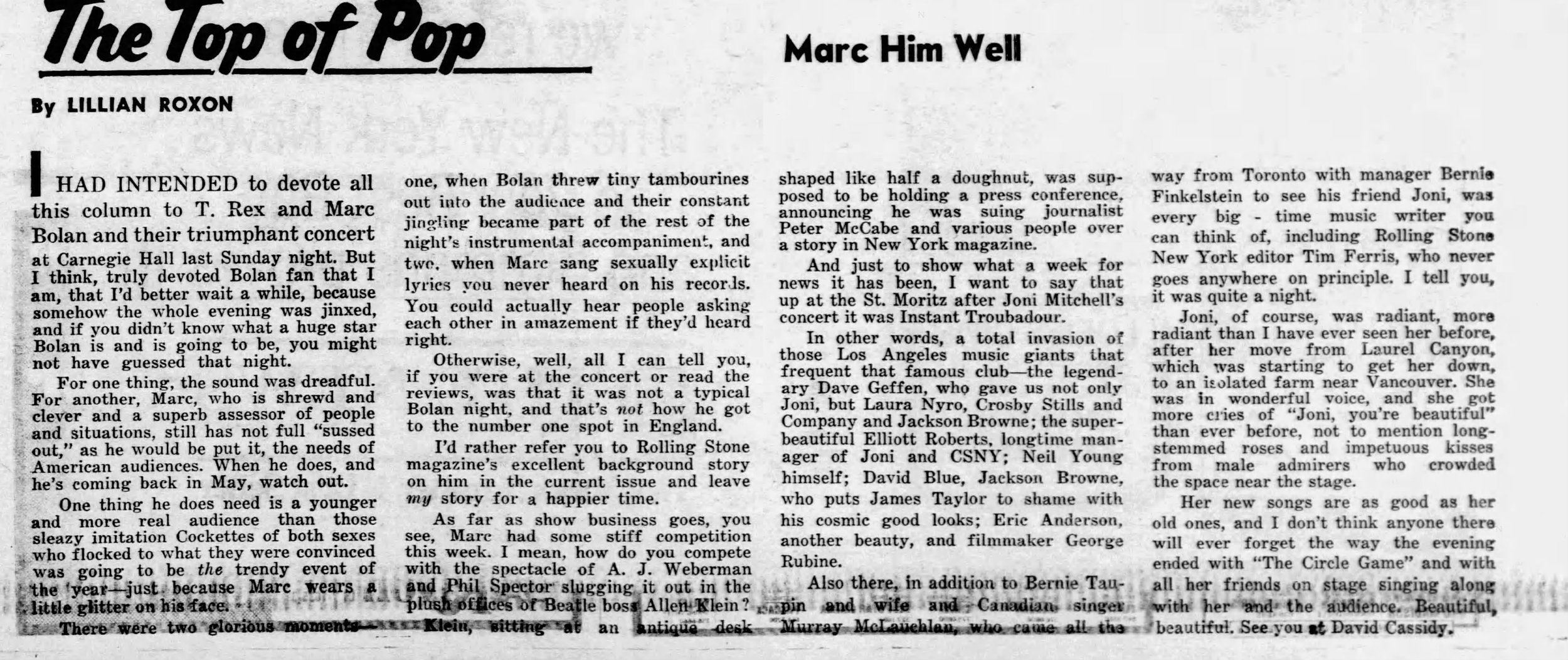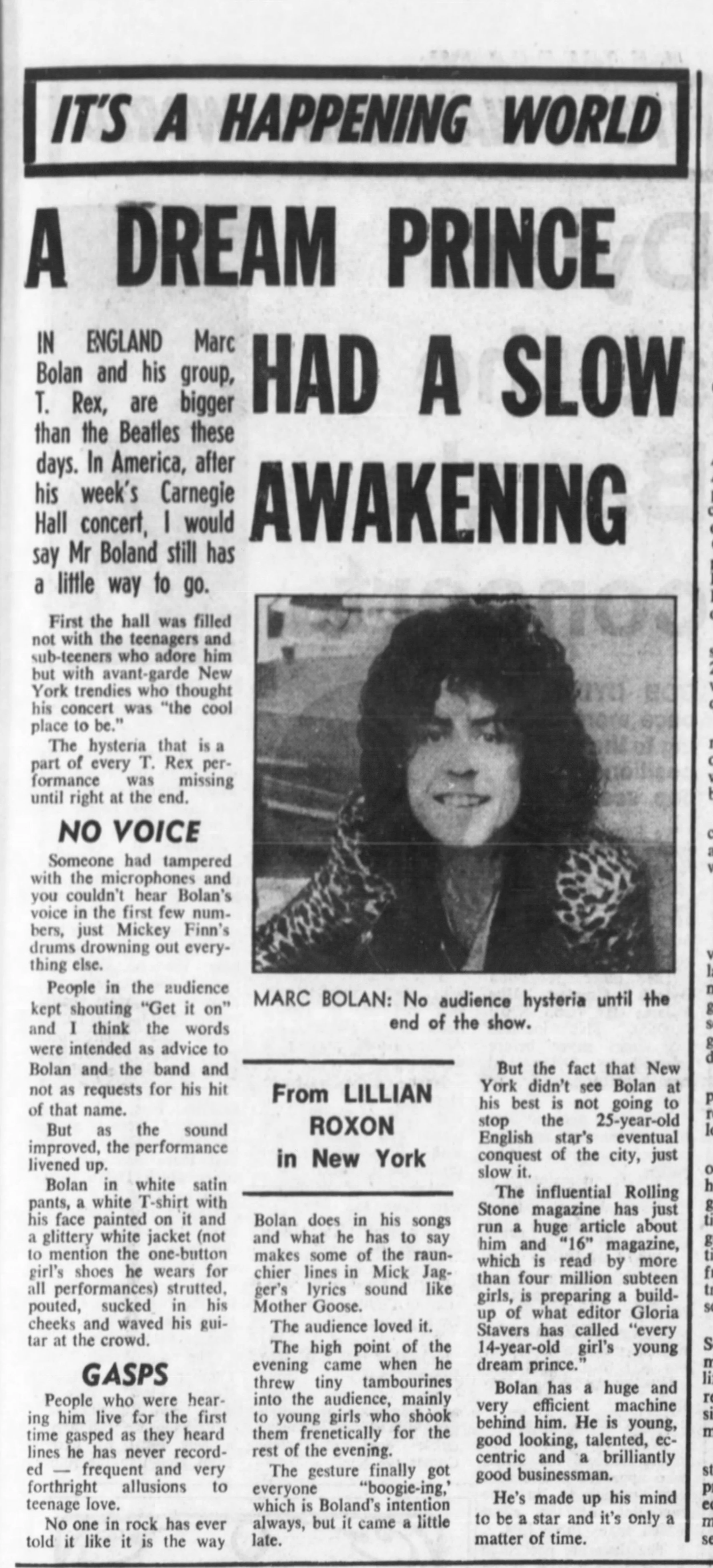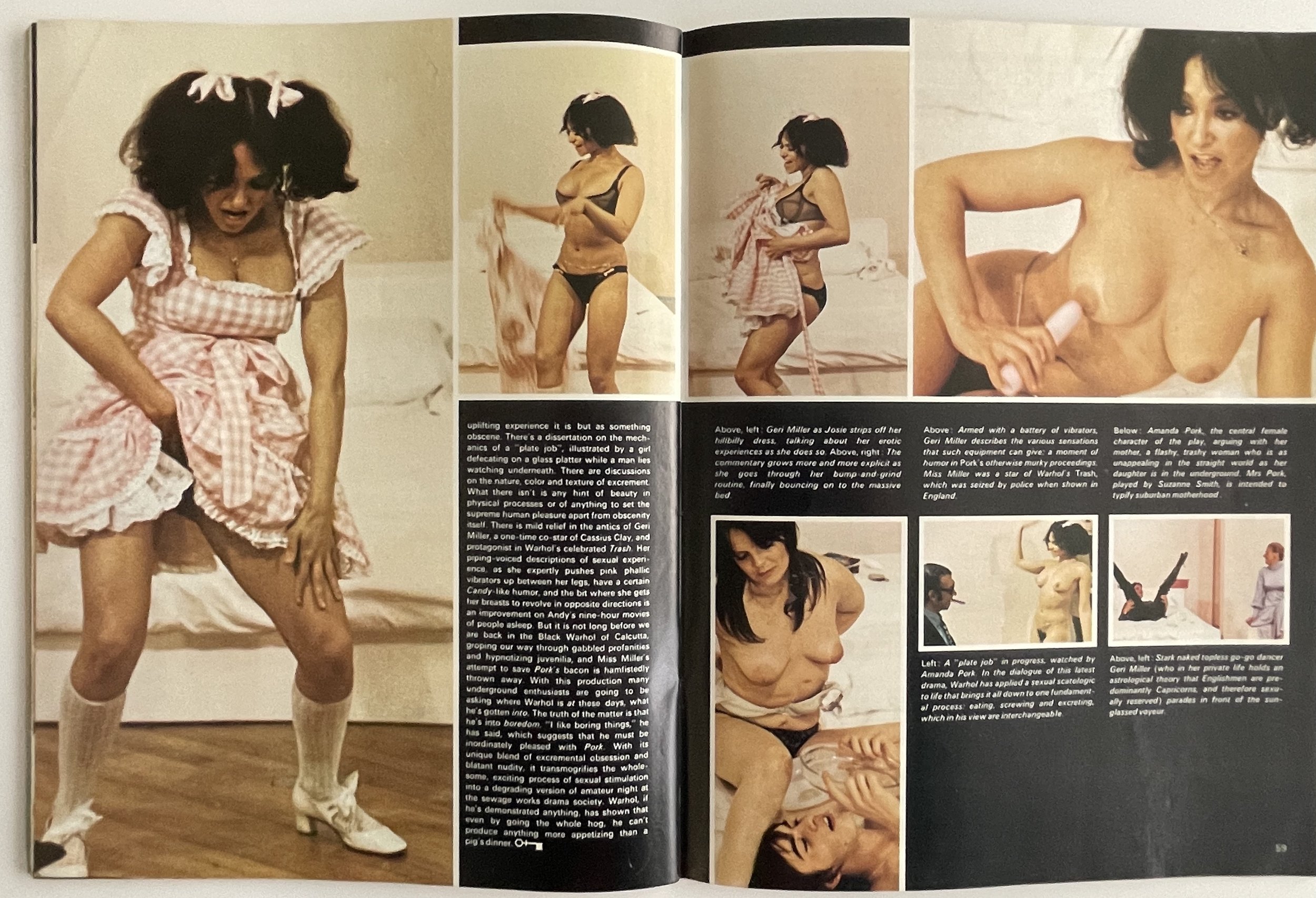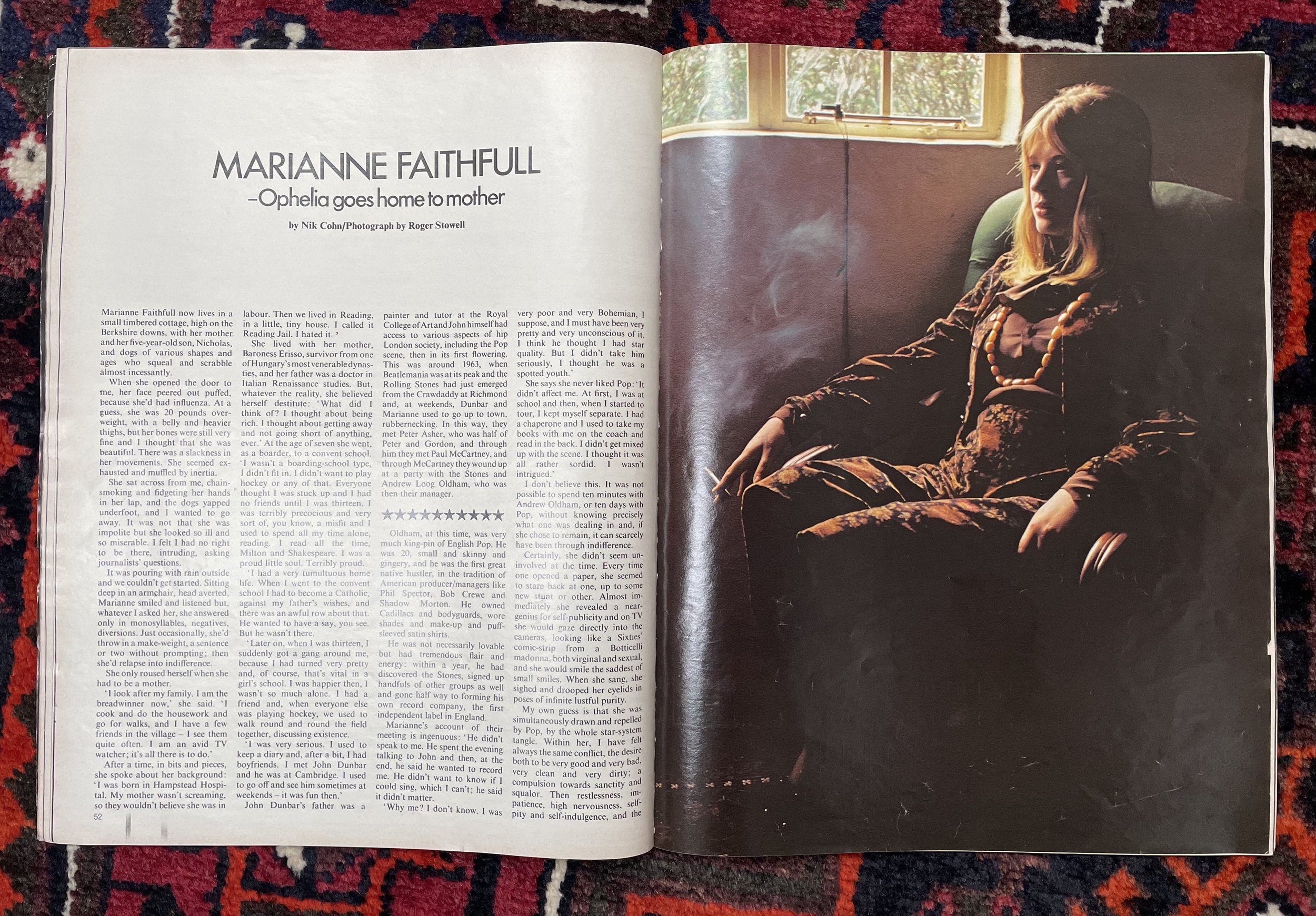OZ #44 (September 1972)
A wonderful interview by Louise Ferrier with Lillian Roxon, given while she was in London to take part in the Bowie hype, July 1972.
Lillian talks about how quotidian Rolling Stone has become and how fanzines have filled the void it has left, she gives a name check to Who Put the Bomp and Greg Shaw, a thumbs up for a Kinks’ zine, is hip to one by ‘two crazy girls’ called Bilge (gotta read that) and a Linda McCartney hate-zine . . . Mick Jagger’s promo machine . . . The influence of the Cockettes and Marc Bolan on Jagger . . . Lennon and Yoko as media stars . . . Brigid Polk and Warhol . . . Germaine Greer (of course) . . .
On Bowie: ‘I really enjoyed Bowie. I think he is beautiful beyond belief. If you’re going to be a rock and roll star you’d better be beautiful . . . He’s a very sexy act’.
On Lou Reed: He is ‘one of the greatest song writers ever and at the moment is not at the highest point of happiness in his life. I don’t think his performance here would have been his best. His best is unbelievable. He generates incredible excitement’.
On Iggy Stooge/Pop: ‘The first time you see Iggy it is fantastic, but after that it’s not quite the same. The guy who handles David wants to put him in films. Iggy is beautiful. I would do different things with him. English audiences are just stunned when he does his things like prowling out into the audience’.
On being bitten on her tit by Angie Bowie . . . on bad sex in NYC . . . better in Boston . . . better still with a vibrator . . . on the cut of Tom Jones’ trousers and his shared love for Elvis . . . and EP on politics . . .
I wonder if the transcript or tape of Louise Ferrier’s talk with Lillian still exists . . . the unedited/unexpurgated version would be something else . . .




































